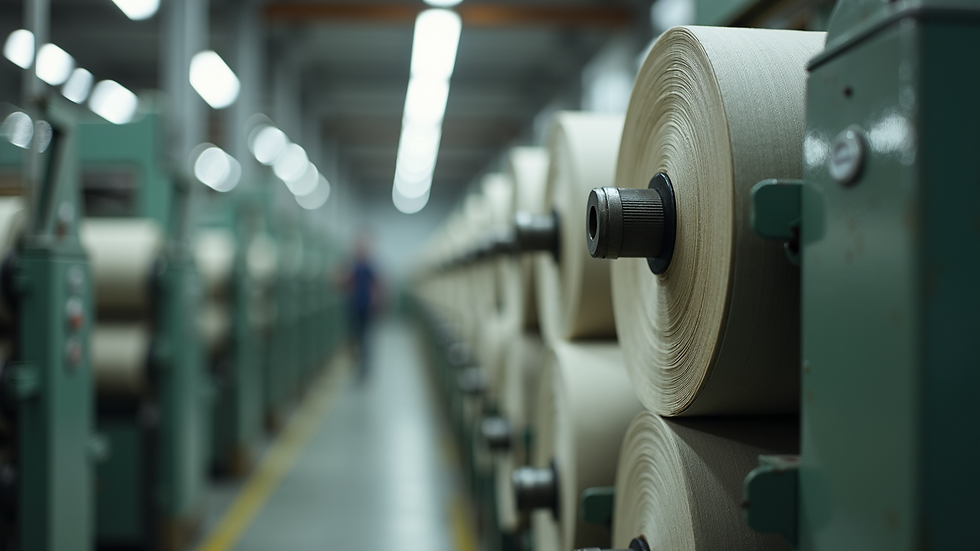How Sustainability is Shaping Today’s Clothing Industry
- padam bhardwaj
- Oct 6
- 4 min read
The clothing industry is undergoing a significant transformation. Consumers and brands alike are becoming more aware of the environmental and social impacts of fashion. This shift is driving the rise of eco-friendly fashion, where sustainability is no longer an option but a necessity. From sourcing materials to production methods, sustainability is shaping how clothes are designed, made, and sold.
The Rise of Eco-Friendly Fashion: A New Era for Clothing
Eco-friendly fashion is about creating clothing that minimizes harm to the environment and promotes ethical practices. This movement is gaining momentum as people demand transparency and responsibility from brands. The traditional fashion industry has long been criticized for its waste, pollution, and exploitation of workers. Now, companies are responding by adopting greener practices.
Some key trends in eco-friendly fashion include:
Using organic or recycled fabrics
Reducing water and energy consumption during production
Implementing fair labor practices
Designing for durability and recyclability
These changes not only help the planet but also appeal to a growing base of conscious consumers who want to make better choices.

Why Sustainability Matters in the Clothing Industry
The clothing industry is one of the largest polluters globally. It consumes vast amounts of water, generates toxic waste, and contributes to greenhouse gas emissions. Fast fashion, in particular, encourages overconsumption and waste, with garments often discarded after only a few wears.
Sustainability in clothing is essential to reduce these negative impacts. By adopting sustainable practices, the industry can:
Lower carbon footprints
Conserve natural resources
Reduce landfill waste
Improve working conditions for garment workers
Consumers are increasingly aware of these issues and are seeking brands that align with their values. This shift is pushing the industry toward more responsible production and consumption models.

How Can Clothes Be Made Sustainable?
Making clothes sustainable involves several strategies that address the entire lifecycle of a garment. Here are some practical ways brands and manufacturers can achieve this:
Material Selection
Choose eco-friendly materials such as organic cotton, hemp, bamboo, or recycled polyester. These fabrics require fewer chemicals and less water to produce.
Eco-Friendly Dyeing and Finishing
Use natural dyes or low-impact synthetic dyes that reduce water pollution. Implement water recycling systems in factories.
Energy Efficiency
Adopt renewable energy sources like solar or wind power in manufacturing plants. Optimize machinery to reduce energy consumption.
Waste Reduction
Implement zero-waste pattern making and recycle fabric scraps. Encourage upcycling and repurposing of old garments.
Fair Labor Practices
Ensure safe working conditions and fair wages for workers. Transparency in the supply chain builds trust with consumers.
Durability and Design
Create timeless designs that last longer and resist wear and tear. Promote repair and care to extend garment life.
By integrating these methods, the clothing industry can significantly reduce its environmental footprint and promote ethical standards.
The Role of Consumers in Driving Sustainable Fashion
Consumers play a crucial role in shaping the future of fashion. Their choices influence what brands produce and how they operate. Here are some ways consumers can support sustainability in clothing:
Buy Less, Choose Well
Invest in high-quality pieces that last longer instead of fast fashion items.
Support Sustainable Brands
Look for certifications and transparent supply chains. Brands committed to eco-friendly fashion often share their sustainability reports.
Care for Clothes Properly
Follow washing instructions to reduce wear and tear. Avoid frequent washing to save water and energy.
Recycle and Donate
Instead of discarding old clothes, donate or recycle them to reduce landfill waste.
Stay Informed
Educate yourself about the environmental and social impacts of fashion. Share knowledge with others to create a collective movement.
By making conscious decisions, consumers can drive demand for sustainable products and encourage brands to adopt greener practices.

Innovations Shaping the Future of Sustainable Clothing
The future of eco-friendly fashion is bright, thanks to technological and material innovations. Some exciting developments include:
Biofabrication
Creating fabrics from lab-grown materials like mushroom leather or lab-cultured silk reduces reliance on animal products and traditional farming.
Waterless Dyeing Technologies
New dyeing methods that use little to no water help conserve this precious resource.
Blockchain for Transparency
Blockchain technology allows consumers to trace the entire supply chain, ensuring authenticity and ethical sourcing.
Circular Fashion Models
Brands are adopting circular models where clothes are designed to be reused, repaired, or recycled, minimizing waste.
These innovations are helping the clothing industry move toward a more sustainable and responsible future.
Embracing Sustainability in Clothing for a Better Tomorrow
The shift toward eco-friendly fashion is more than a trend - it is a necessary evolution. By embracing sustainability in clothing, the industry can reduce its environmental impact and promote social responsibility. Brands, consumers, and innovators all have a role to play in this transformation.
Whether it is choosing sustainable materials, supporting ethical brands, or adopting new technologies, every step counts. Together, these efforts can create a fashion industry that respects the planet and its people, ensuring a better tomorrow for all.
For more information on sustainable practices in the clothing industry, visit sustainability in clothing.
This article highlights practical ways the clothing industry is evolving through eco-friendly fashion and sustainability efforts.




Comments